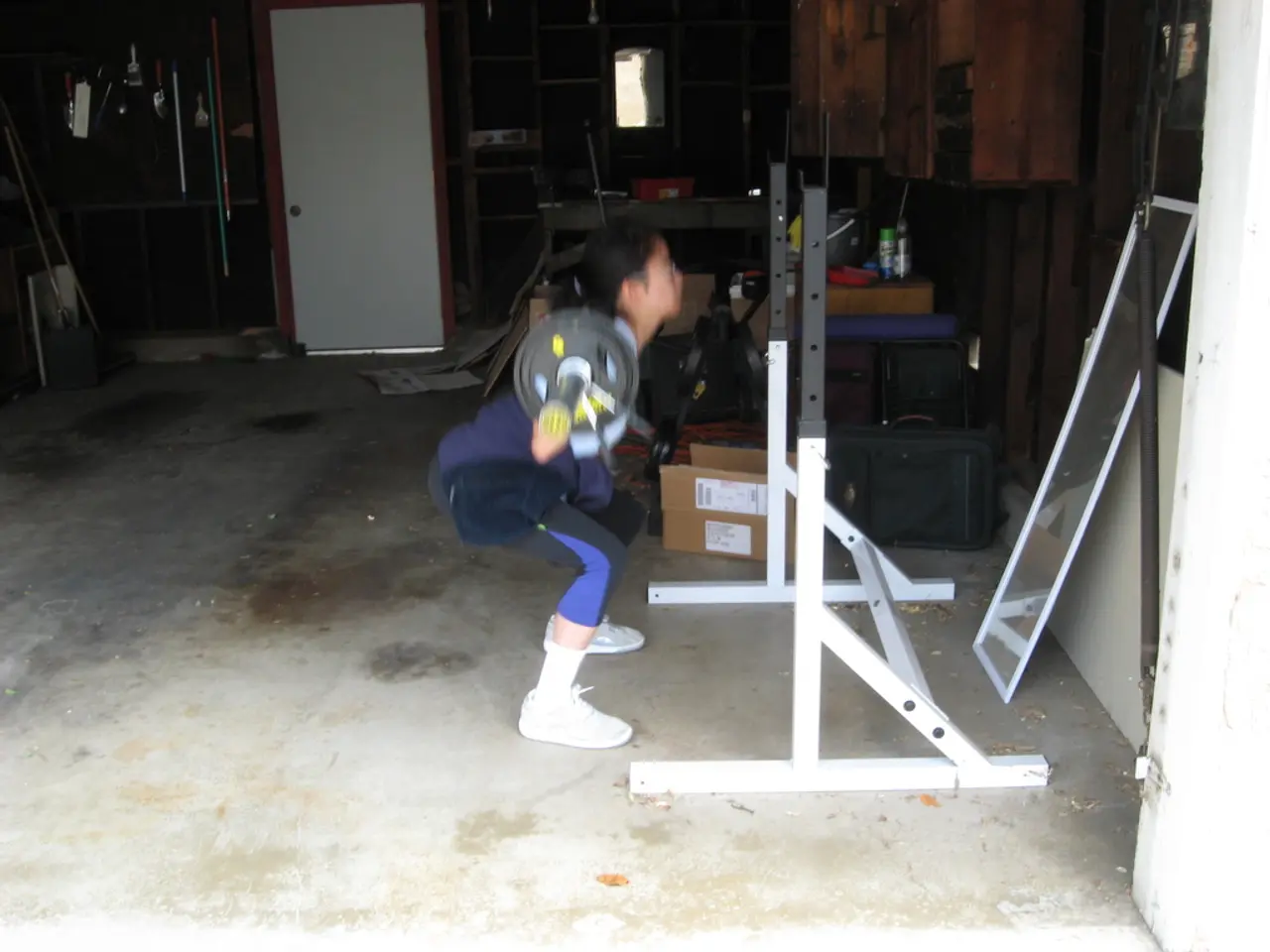Stomach Muscle Injuries: Understanding Causes, Symptoms, Hernias, and Strains
In the realm of physical health, two common issues that affect the abdomen are pulled abdominal muscles and hernias. Both conditions can cause discomfort and hinder daily activities, but they have distinct symptoms, treatments, and prevention methods.
A pulled abdominal muscle, also known as a muscle strain or tear, occurs when one of the abdominal muscles or tendons is overstretched or subjected to sudden forceful movements. This can happen during physical activities that involve twisting, lifting, or sudden impact. Symptoms include localized pain in the abdominal area that worsens with movement, muscle tenderness and possible swelling, muscle spasms or weakness, pain during activities involving the affected muscle, such as bending or twisting.
The primary treatment for a pulled abdominal muscle is rest, avoiding activities that add extra strain to the muscles or cause pain. Ice application to reduce inflammation, pain relief with NSAIDs (ibuprofen, etc.), physical therapy, including gentle stretching and strengthening exercises once pain subsides, and a gradual return to activity are also essential steps in the recovery process. Preventing a pulled muscle involves proper warm-up before exercise, strengthening the core and abdominal muscles, avoiding sudden excessive strain or heavy lifting without proper technique.
On the other hand, a hernia occurs when an organ, typically part of the intestine, pushes through a weak spot or tear in the abdominal muscle or surrounding tissue, creating a visible bulge. Hernias commonly appear in the abdomen or groin. Symptoms include a visible protrusion or lump in the abdomen or groin, which may increase in size with straining or coughing, pain, discomfort, or a dragging sensation at the site of the hernia. In some cases, hernias may be painless but gradually enlarge.
The treatment for a hernia depends on its size and location. Watchful waiting for small, asymptomatic hernias in some cases is possible, but surgical repair is usually recommended to avoid complications. Surgery techniques include open or laparoscopic repair, often reinforced with mesh for strength. Complex hernia repairs may involve muscle release techniques like Transverse Abdominis Release (TAR) for better closure.
Preventing a hernia involves avoiding heavy lifting or using proper techniques, maintaining a healthy weight to reduce abdominal pressure, treating persistent cough or constipation that increase intra-abdominal pressure, and strengthening abdominal muscles.
It is essential to consult a doctor if one is unsure whether they have a hernia or a pulled muscle. In some cases, a hernia can become incarcerated or strangulated, leading to severe pain, nausea, inability to pass stool, and requiring immediate medical attention.
In conclusion, a pulled abdominal muscle is a muscle injury causing pain and weakness without any visible bulge, typically resolving with conservative treatment. A hernia involves an actual break or weakness in the abdominal wall allowing internal tissue to protrude, often requiring surgical repair to prevent complications. Awareness of symptoms and risk factors helps guide appropriate treatment and prevention for each condition.
[1] Mayo Clinic. (2021, March 2). Abdominal muscle strain. Retrieved from https://www.mayoclinic.org/diseases-conditions/abdominal-muscle-strain/symptoms-causes/syc-20354962
[2] American Academy of Orthopaedic Surgeons. (2021, February 25). Sports Hernia. Retrieved from https://orthoinfo.aaos.org/en/diseases--conditions/sports-hernia
[3] Mayo Clinic. (2021, March 17). Hernia. Retrieved from https://www.mayoclinic.org/diseases-conditions/hernia/symptoms-causes/syc-20353813
- Following proper fitness-and-exercise routines involving warming up, strengthening the core, and avoiding sudden excessive strain or heavy lifting can help prevent a pulled abdominal muscle.
- Chronic diseases like diabetes, type 2 nsclc, bipolar, depression, or psoriatic arthritis may require careful management of health-and-wellness through a combination of medical-conditions treatment, nutrition, and fitness-and-exercise.
- Overweight and obesity have been observed to contribute to the development and escalation of multiple chronic diseases including diabetes, hernias, and back pain due to increased pressure on various parts of the body.
- Adopting a balanced diet rich in fruits, vegetables, lean proteins, whole grains, and low in processed foods can help maintain a healthy weight, reduce the risk of chronic diseases, and improve overall health and wellness.
- In some cases, untreated hernias can develop complications, such as herniated contents becoming strangulated, causing pain, nausea, inability to pass stool, and requiring immediate medical attention.
- Abdominal hernias could be a possible concern for patients with chronic diseases such as asthma, multiple sclerosis, or long-term pain conditions, as these conditions may cause persistent cough, constipation, or abdominal discomfort that could increase intra-abdominal pressure and hernia risk.
- Hernias may develop in individuals with occupations that require repetitive heavy lifting, twisting, or sudden impacts, which might lead to an increased risk of developing this chronic disease.
- The science of medical-conditions and their interplay with physical health-and-wellness, nutrition, and fitness-and-exercise is constantly evolving, with ongoing research providing new insights into the prevention, treatment, and management of various chronic diseases such as chronic obstructive pulmonary disease (COPD) and rheumatoid arthritis.
- Incorporating specific stretching and strengthening exercises, as suggested by a certified medical or fitness professional, can be beneficial for patients recovering from a pulled abdominal muscle or those looking to prevent such injuries in the future.
- A retrospective study published in the International Journal of Surgery found that long-term recovery following hernia repair surgeries was positively impacted by patients who prioritized post-surgical physical therapy and Gentle exercise routines.
- For individuals suffering from chronic conditions like recurring sprains and strains, arthritis, or persistent back pain, maintaining an active lifestyle by incorporating appropriate fitness-and-exercise, balanced nutrition, and stress management techniques can help improve their quality of life and reduce the severity of their pain symptoms.




